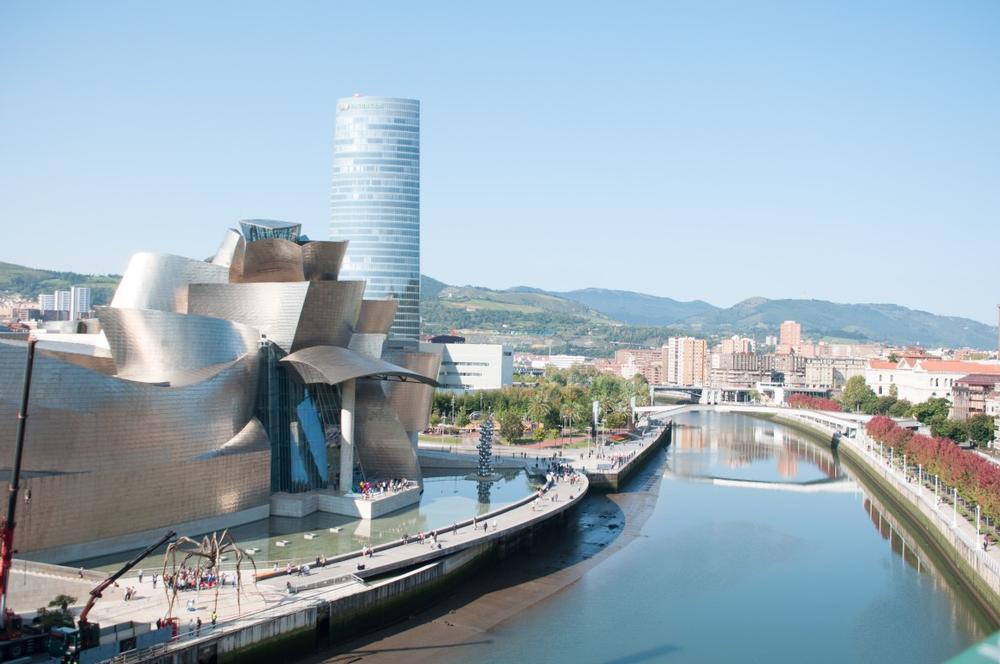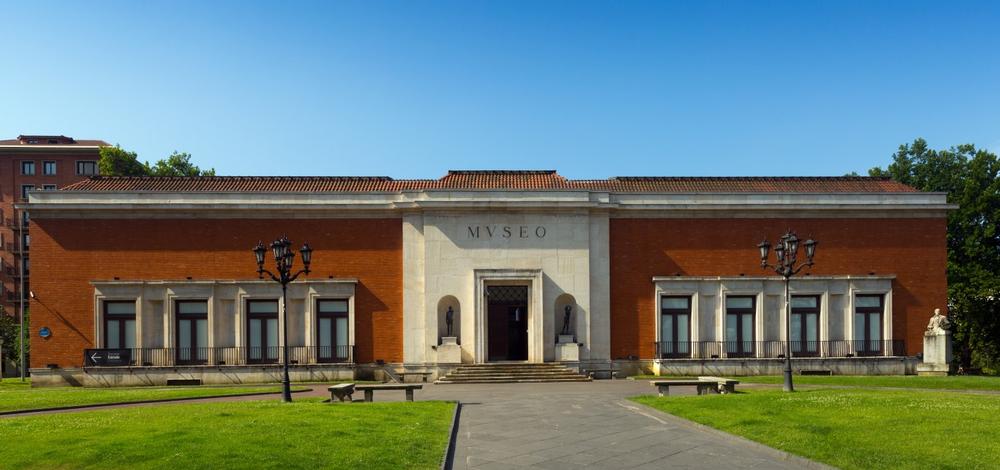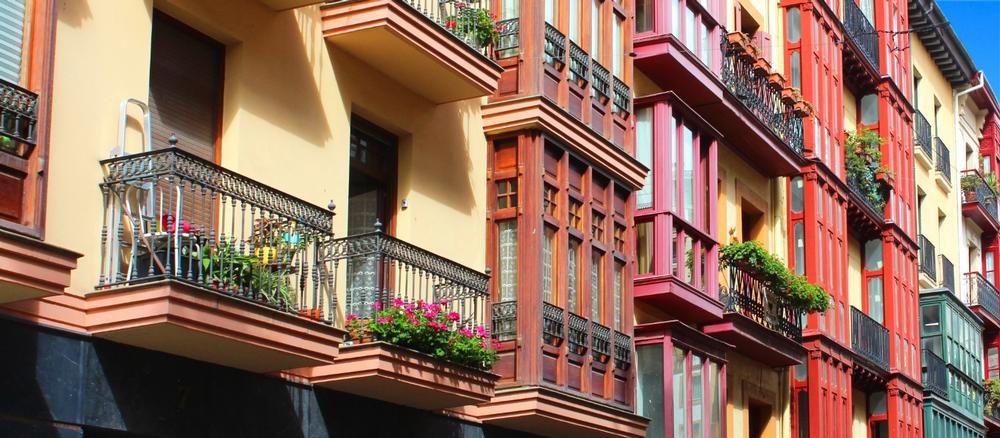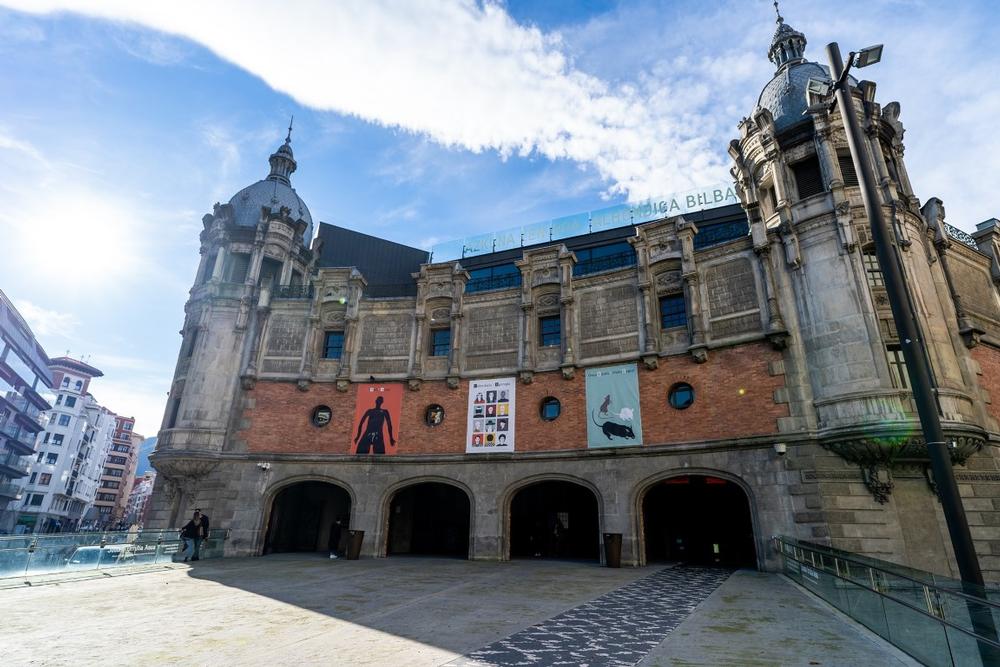In This Article
Need a vibrant urban getaway packed with art, culture, and cuisine? Head to Bilbao! Discover striking modern architecture, world-famous museums, Basque traditions, and incredible food in this lively northern Spanish city. Whether you're an art lover, foodie, or outdoor enthusiast, Bilbao offers a dynamic and unforgettable experience.
Bilbao, Spain Highlights:
- Guggenheim Museum Bilbao: Marvel at iconic contemporary art and the shimmering titanium building designed by Frank Gehry.
- Casco Viejo (Old Town): Wander narrow medieval streets filled with pintxo bars, boutiques, and historic charm.
- La Ribera Market: Sample fresh seafood, local produce, and gourmet bites at Europe’s largest covered market.
- Mount Artxanda: Take the funicular up for panoramic views of Bilbao and its surrounding green hills.
- Bilbao Estuary and Riverside Walk: Stroll the revitalized waterfront lined with gardens, sculptures, and modern architecture.
When I like to visit
The best time to visit Bilbao is during spring (April–June) and early fall (September–October). Enjoy mild weather, fewer crowds, and outdoor festivals while avoiding the heavier rains of winter.
Tips for getting There
- If you are traveling by air: Fly into Bilbao Airport (BIO), about 15 minutes from the city center by taxi or bus.
- By Train: Renfe trains connect Bilbao with major Spanish cities, and Euskotren offers regional connections across the Basque Country.
- By Car: Bilbao is well connected by highway to cities like San Sebastián, Santander, and Vitoria-Gasteiz.
Where I like to stay
- Gran Hotel Domine Bilbao – Luxury hotel directly opposite the Guggenheim Museum, featuring sleek modern rooms and rooftop dining.
- NYX Hotel Bilbao – Trendy hotel in Casco Viejo offering bold design, comfort, and easy access to Old Town attractions.
- Hotel Carlton – Iconic five-star hotel located in Plaza Moyúa, blending classic luxury with excellent service.
Best Things to Do
1. Marvel at Modern Masterpieces Inside the Guggenheim Museum

© Mario/stock.adobe.com
A good amount of a visit to the Guggenheim Museum of Bilbao could be spent just outside, staring in awe at the glass and titanium cladding and flowing lines. Completed in 1997 and designed by Frank Gehry, the museum helped put the city in northern Spain on the map and houses works by many different artists, including Anslem Kiefer, Yves Klein, Eduardo Chillida, Jeff Koons, and Anish Kapoor. This ship-like metal building is made up of nineteen galleries that give precedence to Basque artists. Larger works of art can be seen on display outdoors in the Bilbao “Art District.”
Guggenheim Museum, Avenida Abandoibarra, 2, 48009 Bilbao, Phone: +34-944-35-90-00
2. If You Want to Wander Through Creativity, Explore the Bilbao Art District

© Panpiki/stock.adobe.com
The Bilbao Art District is the result of a public-private initiative creative to promote activities carried out by the cultural and artistic fabric of Bilbao as an important element in the city’s development and future.
The art district was established in 2013 with a goal of making art a “meeting point” for the city’s citizens. Covering the area between Paseo Abandiobarra, Colón de Larreátegui, Jardines de Albia, and the Maritime Museum, the Bilbao Art District is home to some of the most significant art galleries in the city, such as the Museum of Fine Arts and the Guggenheim Museum. Map
What to do if you are traveling with kids:
3. Admire Timeless Beauty at the Museum of Fine Arts of Bilbao

© JackF/stock.adobe.com
Considered to be one of the country's finest art galleries, the Museum of Fine Arts of Bilbao is a heavyweight with a more traditional museum setting. The span of time covered by the museum's collection is particularly notable, with its oldest work of art dating back to the 1100's and the most recent being present day.
Works by Baroque and Renaissance masters like Murillo and El Greco can be seen at the Museum of Fine Arts, along with Francis Bacon, Sorolla, Gauguin, and Goya. Among the masterpieces showcased are “Lying Figure in Mirror” by Bacon and “Laveuses à Arles” by Gauguin.
Museum of Fine Arts of Bilbao, Museo Plaza, 2, 48009 Bilbao, Phone: +34-9-44-39-60-60
4. Get Lost in History and Charm at Casco Viejo

© Brad Pict/stock.adobe.com
Casco Viejo
, or also known as the Old Town of Bilbao, is a rather interesting area to explore, a place full of bars and restaurants, boutique shops, historic sites, colorful architecture, and winding narrow streets.
It’s also a spot for sightseeing, with some of the Old Town’s top sights include the churches of San Anton and San Nicolas, the Arriaga Theatre, the central market, the Plaza Nueva, the Archeological Museum, and the Catedral de Santiago de Bilbao. For travelers headed out in search of pintxos or a meal at night, Casco Viejo is a good place to go.
Activities and Attractions for Couples:
5. Step Into Centuries of Faith at Bilbao Cathedral

© fabiomancino/stock.adobe.com
The Bilbao Cathedral, also known as the Santiago Cathedral or the Cathedral of St. James, is dedicated Saint James the Apostle, who has been Bilbao's patron saint since the year 1643. Constructed during the fourteenth and fifteenth centuries, the church was originally built in the Gothic style, however, its facade and tower were built in a neo-Gothic style.
The Cathedral of Bilbao is both one of Biscay Province’s most important gothic buildings and the oldest monument in the city. The best way to enter the cathedral is through the Puerta del Angel, on the north side.
Bilbao Cathedral, Done Jakue Plazatxoa, 1, 48005 Bilbao, Phone: +34-944-15-36-27
6. If You Crave Culture and Cool Spaces, Visit Azkuna Zentroa

© Azkuna Zentroa
Formerly called the Alhondiga, the Azkuna Zentroa is a center for leisure and culture housed in the old wine exchange in Bilbao, serving as a venue for concerts, exhibitions, and more.
This modernist building was redesigned by Philippe Starck and now sits on forty-three unique columns or pillars, each a work of art on its own. In addition to watching a show or viewing an exhibition, visitors can also take a guided tour of the building. One of several cool features of the Azkuna Zentroa is its swimming pool with a glass-paneled floor on the upper level.
Azkuna Zentroa, Plaza Arriquibar, 4, 48010, Bilbao, Phone: +34-944-01-40-14
7. Taste, Shop, and Savor at La Ribera Market

© Noradoa/stock.adobe.com
La Ribera Market is the city of Bilbao’s famous market situated along the river at the edge of the historic Casco Viejo. The market is one of the best ways for tourists to get well acquainted with the famous food scene of Bilbao and a good place to find numerous local products to bring back home.
Housed within a historic building, La Ribera Market is located on the same site of the city’s old market, which dates back to the fourteenth century. Along with food stalls, live music spaces, restaurants, and bars can be found in the market as well.
La Ribera Market, Ribera, s/n, 48005 Bilbao
8. Discover Basque Heritage at Euskal Museo Bilbao

© Euskal Museoa Bilbao Museo Vasco
Euskal Museo Bilbao
is one of the best museums in Spain dedicated to Basque culture, taking guests on an interesting journey from the Palaeolithic days through the twenty-first century. The museum provides an overview of the life of artists, shepherds, mariners, and boat builders who left their mark on the modern identity of the Basque region.
On display at the Euskal Museo Bilbao are navigational instruments, sheep bells, woodcutter axes, model boats, fishing nets, looms, clothing, and more that help with illustrating everyday life. Round iconic funerary stones lead into the topics of Basque beliefs and rituals.
Euskal Museo Bilbao, Unamuno Miguel Plaza, 4, 48006 Bilbao, Phone: +34-944-15-54-23
9. Uncover Urban Grit and Creativity in Bilbao La Vieja

© Adro Hache Erre/stock.adobe.com
Also known by the name of “Bilbi,” Bilbao La Vieja is a place to go in the city for atmosphere, new dining, art, and fashion. Connected to Abando and the Old Quarter, this area brings together both tourists and locals of the city alike who are drawn to fashion, signature cooking, and artwork.
The streets of Bilbao La Vieja are filled with urban wall art, where the contributions of many prestigious international artists can be found. Nestled between these art pieces are a number of restaurants, cafes, shops, and bars offering international seasonal food, craft beers, delicious pintxos, and more.
10. Sail Through Seafaring History at the Bilbao Maritime Museum

© Erlantz/stock.adobe.com
Located along the waterfront, the Bilbao Maritime Museum is an interactive museum bringing the Basque maritime history and watery depths of Bilbao, Spain to life. Visitors can begin their trip to the museum with a ten-minute film to get an overview of the history of Bilbao from the 1300’s through present day before they explore two display-filled floors showcasing intricate models, pirate threats, innovative coastal rescue strategies, harrowing shipwrecks, and old shipbuilding techniques. Outside, the Bilbao Maritime Museum displays a variety of boats for guests to clamber about. A free multilingual app offers commentary about numerous exhibits throughout the maritime museum.
Bilbao Maritime Museum, Ramón de la Sota Kaia, 1, 48011 Bilbao, Phone: +34-946-08-55-00
Where I Like to Eat
- Café Iruña – Historic café known for its beautiful Moorish interiors and traditional Basque pintxos.
- Nerua Guggenheim Bilbao – Michelin-starred dining inside the Guggenheim offering innovative Basque cuisine.
- Gure Toki – Popular pintxo bar in Plaza Nueva famed for creative small plates with fresh local ingredients.
My favorite local events:
- Aste Nagusia (Great Week) (August) – Bilbao’s biggest festival featuring concerts, fireworks, parades, and traditional Basque celebrations.
- Bilbao BBK Live (July) – Major music festival bringing top international acts to the hills overlooking the city.
- Bilbao Night Marathon (October) – Unique night-time race featuring live music and festive atmosphere along the course.
My favorite day trips within 30 Minutes of Bilbao, Spain:
- Getxo (20–25 min) – Visit lovely beaches, charming coastal promenades, and the famous Vizcaya Bridge (a UNESCO World Heritage Site).
- Portugalete (20–25 min) – Cross the historic transporter bridge or stroll the scenic riverfront.
- Plentzia (30 min) – Relax at sandy beaches and enjoy waterfront dining in this quaint seaside town.
- Bakio and San Juan de Gaztelugatxe (30 min) – Hike to a stunning island hermitage featured in *Game of Thrones*.
- Urdaibai Biosphere Reserve (30 min) – Explore protected wetlands, picturesque fishing villages, and pristine beaches.
Plan Your Trip












